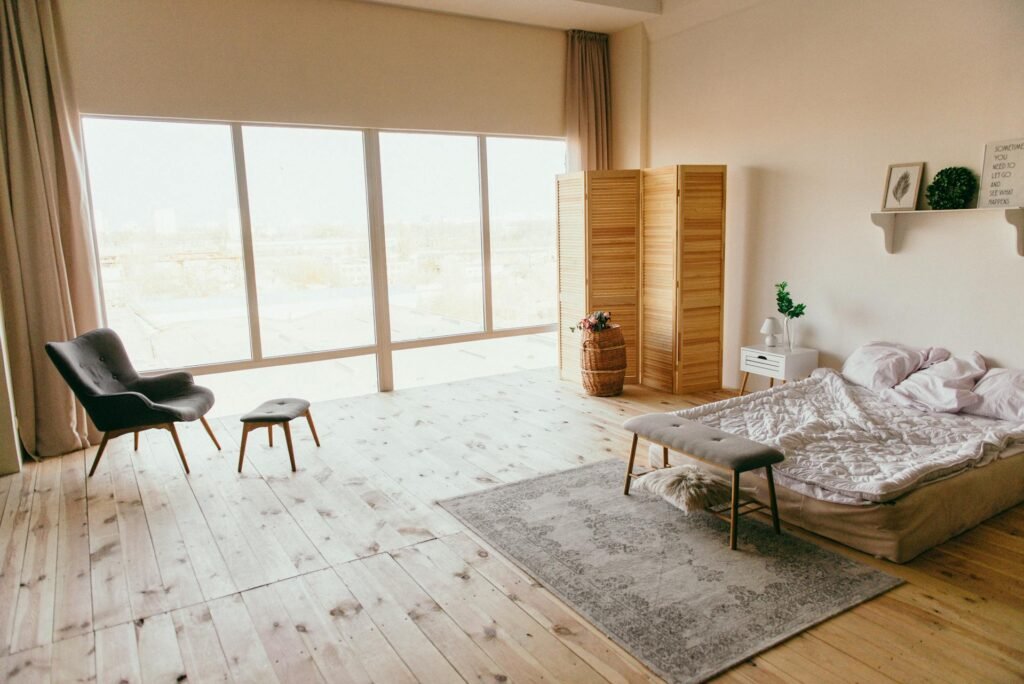Painting a room can refresh your space, but it can also pose risks to your flooring if proper precautions aren’t taken. Drips and spills are inevitable, but damage to your floors is not. Protecting your flooring is crucial to ensuring that your home improvement project doesn’t turn into a costly repair job. Here’s a detailed guide on how to safeguard your floors effectively when painting.
1. Choose the Right Floor Protection
Table of Contents
- Drop Cloths: Canvas drop cloths are the gold standard for protecting flooring because they are durable, absorbent, and less slippery than plastic. They are ideal for catching spills and splatters and can be reused for future painting projects.
- Plastic Sheeting: For larger areas or when using spray applications, plastic sheeting can be useful. It’s waterproof and inexpensive. However, it can be slippery and is not as durable as canvas, so it might not be the best choice for high-traffic areas.
- Rosin Paper: Rolled paper products like rosin paper can be used to protect hardwood floors. It’s a budget-friendly option that can be taped down to keep it in place, offering a decent barrier against paint.

2. Secure the Floor Covering
- Tape Down Edges: Use painter’s tape to secure the edges of drop cloths, plastic sheeting, or rosin paper to the floor. This prevents them from shifting and exposing parts of the flooring. Make sure the tape adheres well but will also remove cleanly without damaging the finish of the floor.
- Overlap Sections: If you need to use multiple pieces of sheeting or cloths, make sure to overlap them generously to avoid any gaps where paint can seep through.
3. Prepare the Area
- Remove Furniture: Clear the room of furniture and other items as much as possible. This not only protects your furniture from paint but also gives you more room to work and move safely without the risk of spilling paint.
- Clean the Floor: Ensure the floor is clean before laying down any protective coverings. Dirt and particles under the coverings can scratch your floor, and dust can interfere with the adhesion of painter’s tape.
4. Be Mindful While Painting
- Use Paint Trays and Buckets Carefully: Always place paint trays and buckets on a protective covering, even if they are not currently in use. Consider using tray liners or small plastic bags to catch drips.
- Avoid Excessive Movement: The more you move around, the greater the chance of paint spilling or protective materials shifting. Plan your approach to minimize movement and rearrange coverings as necessary if you move to a different part of the room.
5. Immediate Clean Up
- Act Quickly on Spills: If paint spills, act quickly to clean it up before it sets. Having clean rags or paper towels at hand can help you deal with spills promptly.
- Dry Before Removing Protection: Allow paint to fully dry before removing any floor coverings. This prevents any wet paint from being tracked across the floor or getting onto other surfaces.
6. Inspect and Clean After Painting
- Remove Coverings Carefully: Remove the protective coverings slowly and gently to avoid spreading any dried paint that might have accumulated on them.
- Clean the Floor: After the coverings are up, give your floor a good cleaning to remove any dust or small paint particles left behind.
By following these steps, you can ensure that your floors stay pristine while giving your walls a fresh new look. Protecting your floors doesn’t just save you from potential damage; it also provides peace of mind, allowing you to focus on creating a beautiful space in your home.


